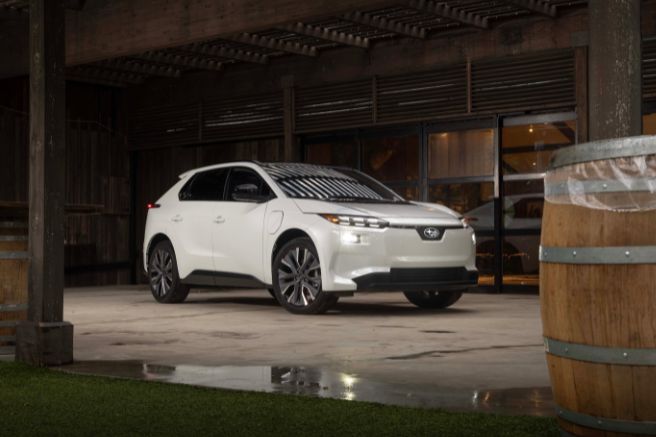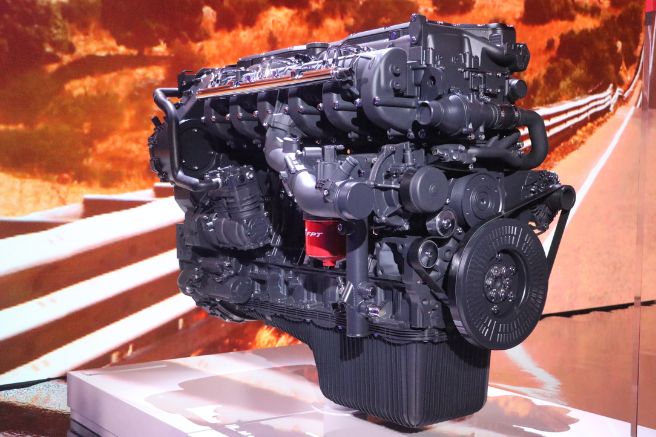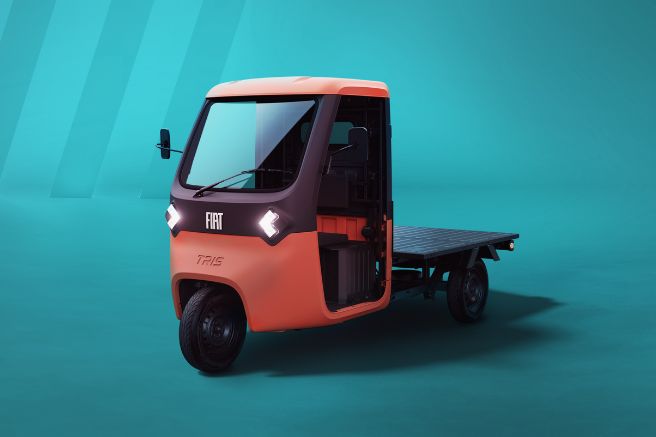Unveiled at Bauma 2025, the Mobile Megawatt Charging System is a mobile power station with a 295 kWh capacity, designed to meet the charging needs of highly electrified construction sites. Developed by Komatsu in collaboration with Dimaag, it brings megawatt-scale charging to where it’s needed most.
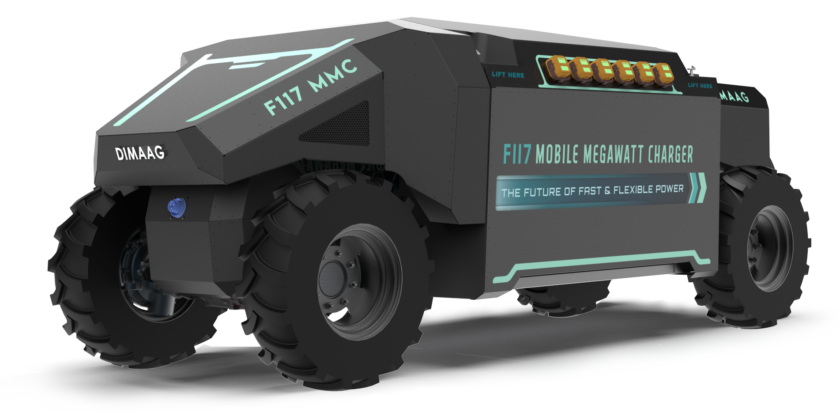
In the heart of the job sites of the future—where every excavator hums quietly thanks to electrification—a new key player is set to roll in: a massive mobile battery pack, ready to recharge depleted electric machines. This is the Mobile Megawatt Charging System: a one-megawatt supercharger (scalable up to six), mounted on wheels. Think of it as a peaceful, battery-stuffed tank, carrying 295 kWh of power, built to recharge fully electric industrial machinery running on batteries. The very same batteries that, as Murphy’s Law dictates, tend to run out exactly when they’re needed most—causing the same kind of range anxiety that haunts today’s electric car owners.
Electric excavators and wheel loaders stopping short long before a smartphone runs out of charge is a real issue. Making batteries mobile has emerged as a practical workaround. The result? An “energy Frankenstein” born from Komatsu and California-based Dimaag—a company whose name evokes the sound your brain makes when it crashes against the wall of logic trying to explain to a client why a battery needs wheels instead of building a proper charging network powered by a diesel generator.
Jokes aside, the two companies have gone big: the unit delivers up to 1,500 amps of current, handles voltages up to 1,000 volts, features active cooling, all-wheel drive, four-wheel steering, and—yes—296 kWh of storage. All this is packed into a form just 3.7 meters long, 1.5 meters wide, and slightly under that in height—roughly the size of a compact trailer or low-profile shipping container, but without the charm of camping or the utility of cargo. And it weighs 5 metric tons.
Five tons of pure energy, capable of recharging Komatsu’s newly launched PC138E-11 electric excavator, also revealed at Bauma 2025. This 13-ton machine is equipped with a battery nearly identical in size to the charging system, and it promises “several hours” of runtime—without specifying how many. It’s like selling a car by telling the buyer the tank lasts “a while.”
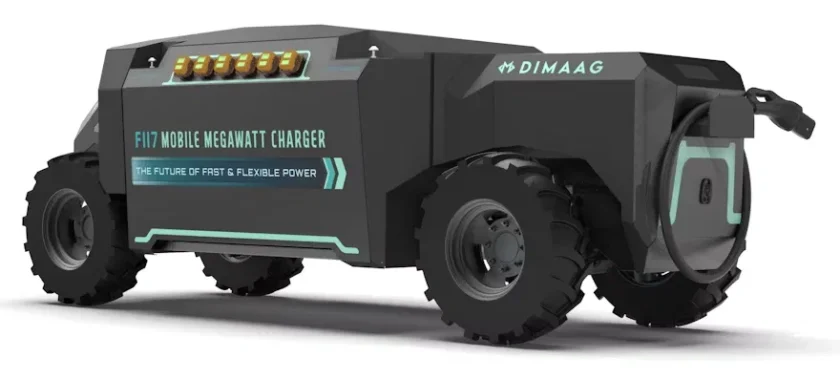
A quick calculation: 5 tons of diesel (roughly 6,000 liters) can power a traditional 13-ton excavator for over 300 hours—about two months of work in a single daily shift. The same 5 tons in batteries? Barely half a day. All while inducing the very range anxiety this Komatsu-Dimaag block of lithium hopes to ease, thanks to a 208 kW (279 hp) integrated drivetrain delivering 2,180 Nm of torque and a top speed of 35 km/h.
An innovation
It’s a drive system worthy of a quarry truck, used here solely to haul a battery from point A to point B with the grace of a teleoperated elephant—no rush, since any extra speed drains the battery faster, requiring another Mobile Megawatt Charging System just to recharge the first one. In essence, it’s a mobile infrastructure that can end up using more energy to move itself than to serve, a spiral of secondary absurdities fueled by the holy mantra of electrification at all costs.
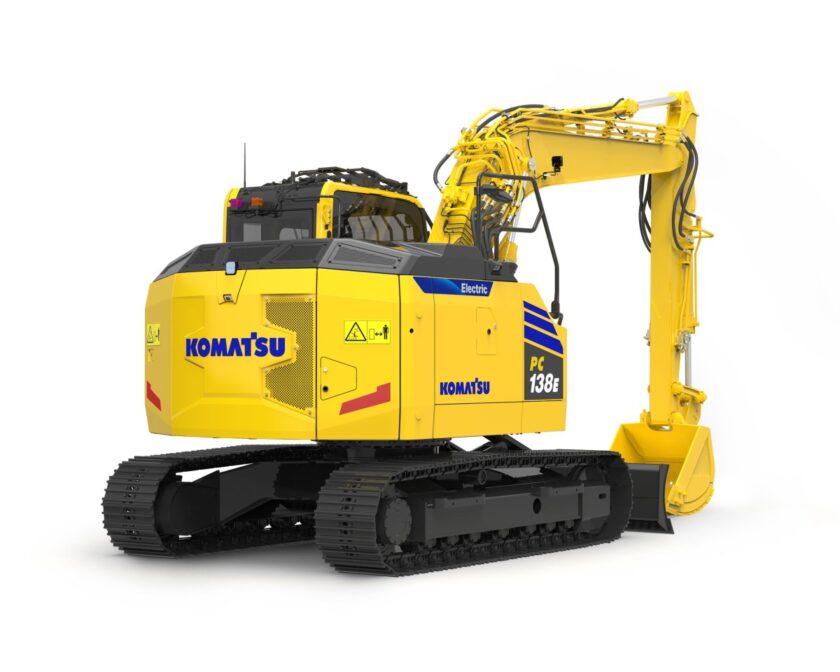
But there’s always a solution. Just install a fixed diesel generator somewhere discreet on-site, and you can now recharge the charger that recharges the excavator. Sure, you’ll burn a little diesel—just far enough from sight to be out of mind, as Sergio Endrigo sang in 1969. Of course, simply putting a combustion engine back on the machine might have been more straightforward. But in an era where electrification is the buzzword, the Mobile Megawatt Charging System stands as yet another attempt to bring “sustainability” where it arguably doesn’t belong—like quarries and heavy earthmoving.
Title: Mobile Megawatt Charging System: Batteries on Wheels
Translation with ChatGPT

